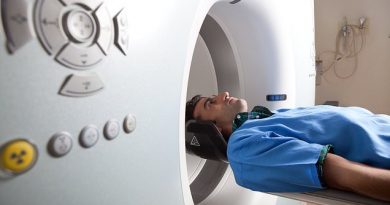Do we tend to centre our Instagram selfies on our left eye? A new study suggests that it may not just be artists who make their eyes the centre-point of their own original work.
Do we tend to centre our Instagram selfies on our left eye?
A new study suggests that it may not just be artists who make their eyes the centre-point of their own original work.
New research suggests that we tend to compose ‘selfies’ that horizontally centre on one of our eyes, particularly the left.
The study authors from City, University of London, the University of Parma, and the University of Liverpool speculate that this alignment is because our eyes provide a wealth of information about our gaze direction and what we are paying attention to, which may in turn be used to share important information with the viewer about our mood and what we are thinking about.
Previous research has suggested that painters apply the same eye-centring principle in their portraits of others and of themselves, whether knowingly or not1, while other research has argued that the eye-centring phenomenon may just be a statistical artefact caused by random processes2.
In the current study, the researchers analysed over 4,000 Instagram ‘selfie’ photos available from the website www.selfie.city.net, with an equal proportion taken in the major cities of New York (US), São Paulo (Brazil), Moscow (Russia), Berlin (Germany) and Bangkok (Thailand).
The study subdivided the images into ‘standard selfies’ taken at arm’s length using a camera-phone or similar digital device, or a ‘mirror selfie’ taken of the creator’s reflection through a mirror and including the digital device in shot. This is an important distinction, partly as it is needed to differentiate whether people have a left or right bias toward composing their selfies.
The study did not include photos commonly known as ‘wefies’, ‘usies’ or ‘groupies’ (i.e. with multiple friends in the shot), those taken next to pets or life-sized dolls, or self-portraits taken from unnatural angles and positions (such as with the head cocked at an extreme angle, or a full body selfie).
For each selfie the horizontal position of each eye relative to the centre-line of the image was measured, with the distance and direction of the closest eye recorded.
Statistical analyses applied to this information showed that the selfie creators tended to centre one of their eyes slightly to the left of centre of the selfie, and usually the left eye.
Interestingly, this centring tendency varied less among selfie subjects than expected if the phenomenon happened by chance, and was seen consistently across all the cities sampled in the study.
Furthermore, the slight centring of the eye to the left is consistent with a phenomenon observed in neurologically healthy people known as ‘pseudoneglect’ in which spatial attention tends to be shifted to the left. This is shown, for example, when people are asked to indicate the middle of a horizontal line drawn on a sheet of paper; on average, the mark is made slightly to the left3.
The fact that the left eye was more commonly centred than the right is also consistent with some previous research suggesting that selfie-takers and artists of self-portraits prefer showing more of their left cheek4.
The authors do however urge caution in interpretation of the findings of left-right bias due to limitations of the study, including the possibility of some of the selfie creators ‘left-right’ flipping their images before posting them.
Professor Christopher Tyler, Professor of Optometry and Visual Sciences at City, University of London and a collaborator in the study said:
“The core result of this study was to replicate my earlier finding that painters tend to centre one eye in portraits, throughout the centuries1, in a modern version of which the selfie takers are simultaneously both the artists and the subjects of the portrait.
“This centring tendency opposes the alternative possibility of placing the symmetric face symmetrically in the frame, which would avoid leaving the non-centred eye ‘out in the cold’. These results are important for understanding the perceptual principles in operation as these diverse ‘portraitists’ choose the framing and composition of their pictures.
“The tendency to centre a feature of particular interest in the frame presumably derives from the fact that we humans have a single focal region of high resolution in the centre of our retinas, the fovea, providing a natural point of attraction for this largely unsuspected tendency in composing the portrait.”
Source: Read Full Article



